Jiangsu Yangzhou 3-day leisure tour
the first day
Shanghai Hongqiao Railway Station → Jiangsu Zhenjiang South Railway Station → Yangzhou City → Yangzhou Changle Hongxi Hotel (check-in) → Heyuan AAAA Scenic Area → Dongguan Street Historical District AAAA Scenic Area → Yangzhou Changle Hongxi Hotel
Depart from Shanghai Hongqiao Railway Station at 09:00 and take the high-speed train to Zhenjiang South Railway Station in Jiangsu Province.
Arrive at Zhenjiang South Railway Station at 11:15 and take a taxi to Yangzhou City, Jiangsu Province. The distance is 35.7-38.6 kilometers, the journey is 41-44 minutes, the highway toll is 31 yuan, and the fare is 92-100 yuan.
Arrive in Yangzhou City at 12:00 for lunch.
Yangzhou is a prefecture-level city in Jiangsu Province and one of the 27 cities in the central area of the Yangtze River Delta. It is a world heritage city, the world food capital, the world canal capital, the east Asian cultural capital, the first batch of national historical and cultural cities, and a scenic tourist city with traditional characteristics. It is located in the central part of Jiangsu Province and at the intersection of the Yangtze River and the Beijing-Hangzhou Grand Canal. Due to its special geographical location, Yangzhou experienced almost a historical prosperity in ancient China, accompanied by the prosperity of culture. It is known as the geographical and geometric center of the land area of Jiangsu Province (Gaoyou City, Yangzhou), is known as the "Famous Capital of Huaizuo and the Best Place of Zhuxi", and is also known as the "First Canal City in China"; it is known as Yangyi Second and Moon City.

Yangzhou, known in ancient times as Guangling, Jiangdu, and Weiyang, dates back to 486 BC. The Yangzhou section of the Grand Canal of China was included in the World Heritage List; Yangzhou was included as one of the World Heritage Cities declared by the China Maritime Silk Road.
Depart from the restaurant at 13:30 and walk to Yangzhou Changle Hongxi Hotel.
Arrive at Yangzhou Changle Hongxi Hotel at 13:45 and check in.
Yangzhou Changle Hongxi Hotel is a Zhejiang-style historical building boutique hotel managed by Mingcheng Hotel Management Company and mainly serves domestic and foreign business and tourist guests. The hotel is located along the Millennium Ancient Canal in Yangzhou (No. 45 Taizhou Road, Guangling District), only 500 meters away from Dongguan Street, one of the top ten famous streets in China.
The hotel covers an area of approximately 7930 square meters. The entire Wudaotai Mansion incorporates the characteristics of Chinese classical architecture and Western classical architecture; it displays the essence of Chinese classical culture and old official culture, and is one of the rare classical buildings.

There are a total of 26 rooms/set in the hotel. It has standard rooms, queen beds, executive suites, and other room types. The room is fully equipped with central air conditioning, floor heating, independent temperature control, satellite TV, domestic and international direct calls, mini bar, electronic safe, WI-FI and other equipment.

The hotel has Chinese and Western restaurants, various luxury VIP boxes, tea bars, chess and card rooms, and large and small conference rooms to meet all your business and vacation needs. Not only can you taste special delicacies in the hotel, but you can also spend every minute leisurely in the scenic hotel attractions, experience the exquisite Yangzhou and enjoy Yangzhou culture.
Depart from the hotel at 14:20 and take a taxi to Heyuan AAAA Scenic Area. The distance is 1.8 kilometers, the journey is 4 minutes, and the fare is 9 yuan.
Arrive at Heyuan AAAA Scenic Area at 14:30 and have fun.
He Zhiyu, the owner of Heyuan Garden, was a Yangzhou gentry who married Li Hongzhang, an important minister in the late Qing Dynasty, and Sun Jianai, the teacher of Emperor Guangxu. He built this private garden in the ninth year of Guangxu (1883 AD). He Garden has the reputation of "the first garden in the late Qing Dynasty". The buildings in the garden combine Chinese and Western, and are connected by complex corridors. The layout is full of layers.
The whole garden consists of several parts: a back garden, a residential courtyard, and a rocky mountain house (a pile of artificial rocks, with only traces left, of a very small scale) located in the southeast. Each part is connected through a complex corridor (commonly known as "Chuanlou" by Yangzhou people, which is a corridor divided into two floors: upper and lower). This kind of cloister on the upper and lower floors is the biggest feature of the He Yuan building. People in the park walk through the garden through the cloister, shelter from rain on rainy days and shade from the sun on sunny days, and are not affected by the weather. The flowered window belt formed by a series of leaking windows and empty windows opened on the complex corridor is also a major feature of the park.

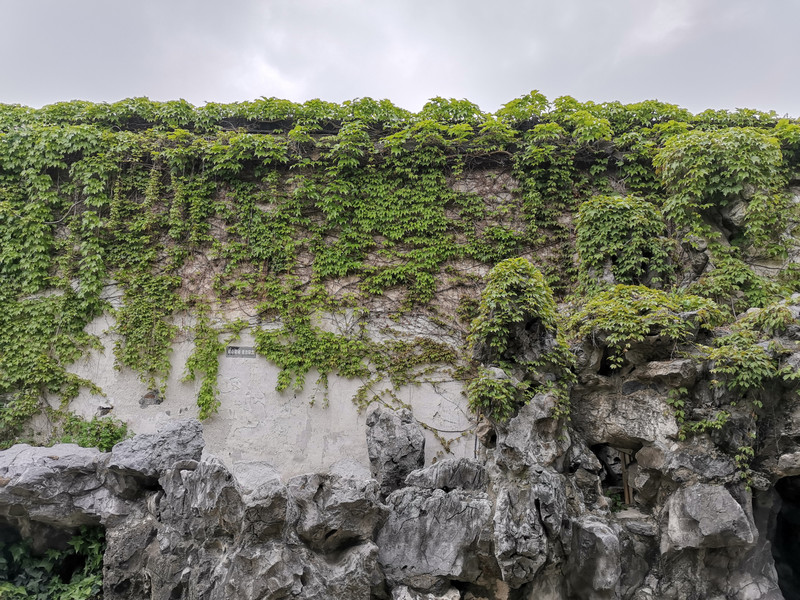
The back garden is divided into two parts: east and west in terms of layout. The main buildings include boat hall, water center pavilion, etc. In the east, a group of courtyards are formed with the "hall" as the center. The "boat hall" is the most exquisite. The hall is shaped like a boat. The floor is paved with pebbles and tiles. The pattern is water-like, giving people the feeling of living in the water. In the west of the garden, there is a pool in the middle. There is a water center pavilion built in the pool. It is the place for the owner of the park to watch the drama performances. The design of the "Water Theater Pavilion" is unique. The owners of the park, old and young, live in the Yuxiu Building in the south, which is a building that combines Chinese and Western styles. It not only adopts traditional Chinese brick-and-wood structures, but also uses a large number of French shutters, Japanese sliding doors, French fireplaces, wrought iron beds, etc.
At present, He Yuan is also a natural base for filming domestic film and television dramas. Nearly 100 film and television dramas such as the new version of "Dream of the Red Chamber" and the sequel to "Princess Huanzhu" are filmed here.


He Garden is not large in area, and tourists can reach anywhere in the park through the complex corridor. He Garden has two gates: the east gate and the south gate. Tourists enter and exit through the east gate, and the south gate is not open to the public. There is a tour guide service at the east gate. The tour guides in He Yuan are called "Qian Jin of the He Family" and are composed of a group of young girls dressed in evening breeze costumes. These beautiful tour guides themselves are also a scene in He Yuan.


Not far southeast of Heyuan (about 10 minutes 'walk) is the Lu's Salt Merchants Residence, which is currently the famous Huaiyang Restaurant in Yangzhou.
Depart from Heyuan AAAA Scenic Area at 15:45 and walk back to the hotel.
Arrive at the hotel at 16:15 and take a nap.
Depart from the hotel at 17:30 and walk to the AAAA Scenic Area of Dongguan Street Historical District.
Arrive at the AAAA Scenic Area of Dongguan Street Historical District at 17:45 for dinner and watching the night view.
The AAAA Scenic Area of Dongguan Street Historical District is located in the center of Yangzhou City. The main street is paved with stone slabs. Walking on the road, you can see the salt merchant compound with blue bricks and gray tiles from time to time. The concentration of delicious food and local specialties adds to the fun of shopping for tourists. It is worthy of being called "a representative historical old street in Yangzhou City."
The original street surface was paved with long slabs. Dongguan Street used to be not only an important water and land transportation route in Yangzhou, but also a center of commerce, handicrafts and religious culture. The streets are bustling and lined with businesses. There are nearly 100 businesses and businesses are booming. There are nearly 100 Lu Chen Xing, Youmi Fang, Fresh Fish Shop, Eight Xian Shop, Melon Fruit Shop, and Bamboo Shop.
Dongguan Street runs east to the ancient canal and ends at Guoqing Road in the west. The Dongguan Gudu at its east end was a relatively prosperous terminal in Yangzhou during the Tang Dynasty. With the terminal, Dongguan Street, a commercial-intensive market. The current Dongguan Street still maintains its appearance in the Ming and Qing Dynasties.

When you come to Dongguan Street, you naturally have to first try Yangzhou's specialty cuisine. If you see which shop on the street is popular, you can buy it in the past and eat it. The price is basically reasonable. Lotus root flour glutinous rice balls, Sixi glutinous rice balls, dumpling noodles, Huangqiao sesame cakes, Da-boiled dried shredded silk, lion's head, etc. can all be eaten on Dongguan Street. Some restaurants are opened in old houses, such as Jiangnan Yipin Zhonghan Mansion (No. 312 Dongguan Street). It used to be the former residence of banker Hu Zhonghan. Now it mainly sells salt merchants 'private dishes. However, it is just for the atmosphere of eating in the old house. Food will be very slow when there are more tourists.

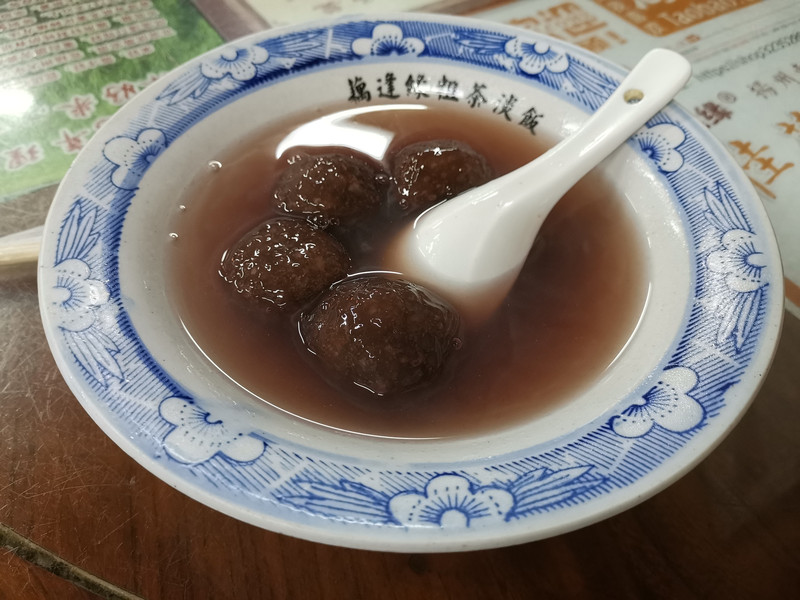


If you want to shop, there are many century-old shops on the street. For example, Xie Fuchun (No. 243 Dongguan Street) in 1830. Xie Fuchun's duck egg powder was called "a must-buy letter in Yangzhou" by many strategies. It was very popular among girls. Note that only a hundred yuan piece is used to wipe the face. The twenty yuan piece can only be used as a solid perfume. When placed in the wardrobe, the clothes will smell good. Another example is Simei Sauce Garden (No. 138 Dongguan Street) in 1817. Buy some pickles and share the fun with your friends during dinner.



Dongguan Street has a relatively complete Ming and Qing architectural complex and a "fishbone" street system, maintaining and inheriting the traditional features of the Ming and Qing Dynasties. It has a total length of 1122 meters. There are more than 50 important historical relics such as former residences of celebrities, salt merchant mansions, temple gardens, ancient trees and wells on the street, including 2 national-level cultural protection units, 2 provincial-level cultural protection units, and 21 municipal cultural protection units. This diverse and vibrant spatial pattern of "river (canal), city (city gate), and street (Dongguan Street)" reflects the unique charm of the Jiangnan Canal City.
Depart from the AAAA Scenic Area of Dongguan Street Historical District at 21:00 and walk back to the hotel.
Arrive at the hotel at 21:20.
the next day
Yangzhou Changle Hongxi Hotel → Purified Water (Breakfast/AAAA Scenic Area of Dongguan Street Historical District) → Slender West Lake AAAAA Scenic Area → Yechun Tea House (Hongqiafang Store/lunch) → Yangzhou Changle Hongxi Hotel (lunch break) → Dongguan Street Historical District AAAA Scenic Area (Dinner) → Yangzhou Section of Ancient Canal → Changle Hongxi Hotel
Depart from the hotel at 08:00 and walk to the AAAA Scenic Area of Dongguan Street Historical District.
Arrive at the AAAA Scenic Area of Dongguan Street Historical District at 08:20. Breakfast.


The water is boiled on Dongguan Street (No. 153 Dongguan Street, Guangling District), which can be said to be the most high-profile tea house in Yangzhou.





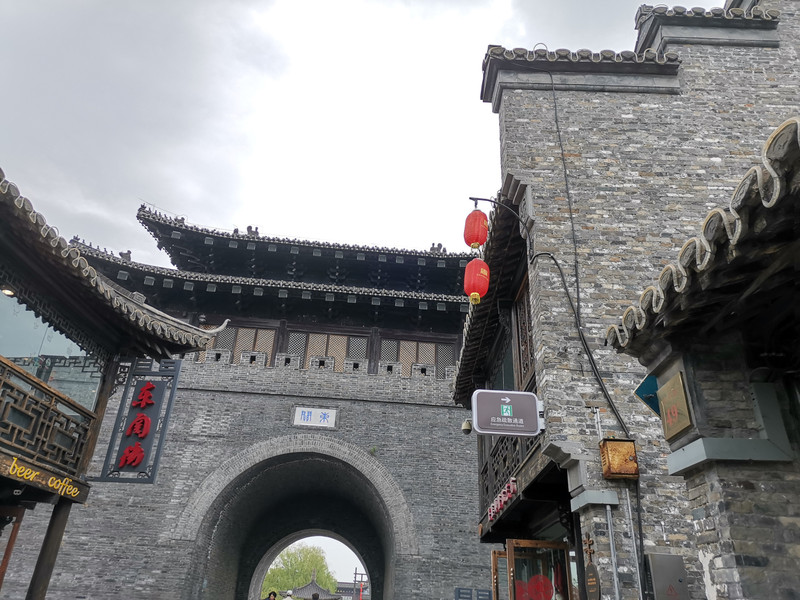
Depart from the restaurant at 09:00, hire a taxi and head to the AAAAA Scenic Area of Slender West Lake. The distance is 4.8-6.1 kilometers, the journey is 14-18 minutes, and the fare is 12-16 yuan.
Arrive at the AAAAA Scenic Area of Slender West Lake at 09:20 to have fun and make tea.
Slender West Lake AAAAA Scenic Area is a long and narrow river. Here, you can either walk along the river to enjoy the natural beauty, or walk into pavilions and pavilions to taste the poems, paintings and ink treasures of literati and literati of past dynasties. You can also sit on a boat and feel the leisurely mood of Emperor Qianlong visiting the lake.
"Fireworks fall under Yangzhou in March". When you come to Yangzhou in spring, you must visit Slender West Lake. The entire Slender West Lake Scenic Area is very large. It starts from Dahongqiao in the southeast of the scenic area, and goes north along the lake to Guanyin Mountain. It passes through dozens of scenic spots on the way. There are 4 gates in the scenic area, southeast, northwest, and usually you enter from the south gate on Dahongqiao Road to start your tour. Slender West Lake is a famous lake garden with beautiful natural landscapes. The green willows here are shaded in spring, accompanied by camellia, pomegranate, rhododendrons, peach and other flower trees, attracting tourists from all over the world to visit and enjoy flowers every year. For thousands of years, countless literati and literati have lingered here, reciting poems and painting, leaving behind many calligraphy treasures and stories, and also built many scenic buildings according to local conditions.


Wuting Bridge is the symbol of Slender West Lake and has a history of more than 200 years. There are five wind pavilions built on the bridge. Every full moon night, each of the fifteen bridge holes under the Wuting Bridge contains a moon. The 24th Bridge is another famous attraction in the scenic area. It comes from Du Mu's poem,"The 24th Bridge is bright and bright on the night, where does the jade man teach to blow the whistle?" The original bridge no longer exists, but now it is a rebuilt bridge.
This was also a must-visit place for Emperor Qianlong in the Qing Dynasty when he went to Jiangnan. The architectural landscapes such as the Dahongqiao Bridge, Diaoyutai, White Pagoda, and Xichun Terrace we see today have left behind stories that are inseparable from Emperor Qianlong. It is said that "beautiful women come from Yangzhou", and the beautiful tour guides here are also a beautiful scenery in the scenic area.
Every summer, when Slender West Lake is open for night tours, you can admire the lit pavilions and pavilions and the moon shadow reflected in the lake. The night tour requires a full boat ride, which is very relaxing. It is good to come here in midsummer to cool off while playing the lake breeze.




Depart from Slender West Lake AAAAA Scenic Area at 13:45 and walk to Yechun Tea House (Hongqiao Square Store).
Arrive at Yechun Tea House (Hongqiao Square Store) at 14:00 for dinner.



Yechun mainly uses Huaiyang fine snacks and snacks, such as Huangqiao sesame cake, scallion oil fire, Huizhou cake, Dazhu dried shredded and other varieties. It has strict selection of materials, unique manufacturing methods, equal emphasis on color, aroma and shape. It has strong local characteristics and is deeply loved by customers.
At 15:00, we set off at Yechun Tea House (Hongqiaofang Store), took a taxi and returned to the hotel. The distance is 3.4 kilometers, the journey is 16 minutes, and the fare is 17 yuan.
Arrive at the hotel at 15:20 and take a nap.
Depart from the hotel at 17:20 and walk to the AAAA Scenic Area of Dongguan Street Historical District.
Arrive at the AAAA Scenic Area of Dongguan Street Historical District at 17:45 for dinner.
Depart from the AAAA Scenic Area of Dongguan Street Historical District at 20:00 and walk to the Yangzhou Section of the Ancient Canal.
The Yangzhou section of the Ancient Canal is the oldest section of the entire canal. The canals in Yangzhou are mostly consistent with the ancient Hangou route more than 2000 years ago, and are completely consistent with the canal dug by Emperor Yang of the Sui Dynasty. The total length from Guazhou to Baoying is 125 kilometers. Among them, the Yangzhou Urban area section of the Ancient Canal is about 30 kilometers long from Guazhou to Wantou, constituting the famous "Three Bays of Yangzhou."
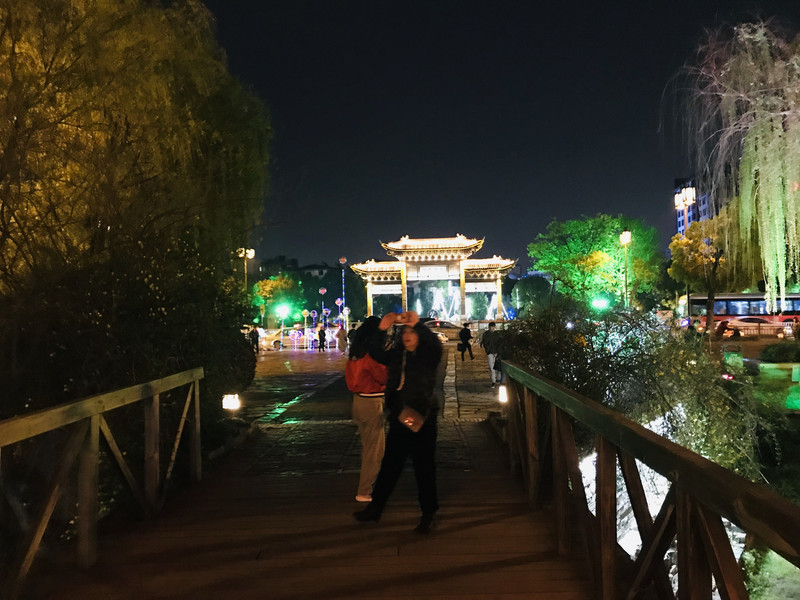

Yangzhou is the birthplace of the Grand Canal and the leading city in China's Grand Canal's heritage application. It unites 34 cities along the route. After 8 years of hard work, the Grand Canal of China was included in the World Heritage List in June 2014 and became China's 46th World Heritage Project. There are currently 10 sites and 6 river sections in Yangzhou that have been listed as World Heritage Sites, making it the largest number and most complete variety among the cities along the Grand Canal in China.
Depart from the Yangzhou section of the Ancient Canal at 21:00 and walk back to the hotel.
Arrive at the hotel at 21:20.
the third day
Yangzhou Changle Hongxi Hotel → Jinchun Hotel → Zhu Ziqing's former residence → Wu's residence (Wudaotai Mansion) → Jiangsu Zhenjiang South Railway Station → Shanghai Hongqiao Railway Station
Depart from the hotel at 08:00 and walk to Jinchun Hotel.

Arrive at Jinchun Dasa Store at 08:15 for breakfast.
Jinchun Hotel is located at No. 59 Taizhou Road, Yangzhou City (the famous capital of Dongguan Ancient Crossing to Song City) During the Qianlong period of the Qing Dynasty, Yangzhou salt merchants Wu built Jinchun Garden, which means "splendid spring" and "beautiful spring light." Qianlong's southern tour once stationed in Jinchun Garden as a palace and wrote a poem. Later, dignitaries, literati and literati came in droves, and Jinchun Garden once became a sight in Jiangnan. Qianlong personally wrote the title "Jinchun" with his royal pen, and today it is full of vitality.
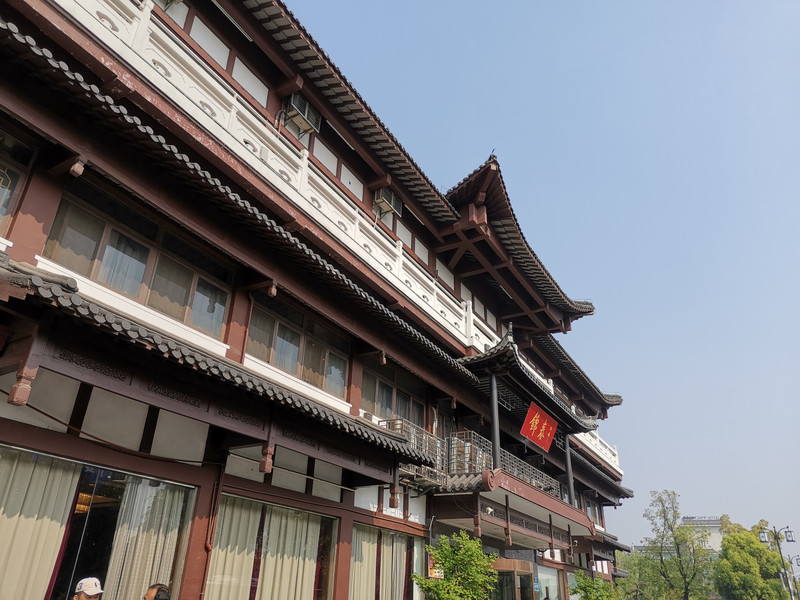
Jiefang Qiaotou, along the ancient canal, the ancient ferry of Dongguan, and the famous capital of Songcheng. Yangzhou Jinchun Hotel has a unique location, beautiful scenery, elegant environment and convenient transportation. Jinchun Hotel has a brand new decoration, advanced facilities, beautiful scenery and delicious food, which are pleasing to the eye. There are more than 20 high-end private rooms, 3 luxurious private rooms, and a scattered living room. The hotel is open, clean, comfortable and pleasant, and can accommodate more than 400 people at the same time. It is an ideal place for tourism, business, banquets and reception.


Depart from Jinchun Dasa Store at 09:00 and walk 700 meters to Zhu Ziqing's former residence.


Arrive at Zhu Ziqing's former residence at 09:15 for a tour.
Zhu Ziqing's former residence was built in the Qing Dynasty. It is a typical residential "Sanjiao" building in Yangzhou, revealing a strong bookish spirit.


Zhu Ziqing (1898-1948), formerly known as Zihua, also known as Peixian and Qiushi, was a modern Chinese essayist, poet, scholar and democracy fighter. His ancestral home was in Shaoxing, Zhejiang Province, and he was born in Donghai County, Jiangsu Province. Since his grandfather and father both settled in Yangzhou, he graduated from Jiangsu Province No. 8 Middle School (now Yangzhou Middle School) in Yangzhou, and later worked as a teacher in Yangzhou, so he called himself a native of Yangzhou.
The themes of Zhu Ziqing's prose are mainly expressed in five aspects: first, expressing aspirations and expressing ideas; second, visiting tours; third, expressing emotions in writing; fourth, feeling the world; and fifth, criticizing the shortcomings of the times. Zhu Ziqing loves classical poetry and is very familiar with classical poetry. When he writes prose, he can integrate the artistic conception of poetry with the artistic conception of prose and create a realm of poetic emotion and painting in prose.
Most of Zhu Ziqing's essays are short in length and have more ingenuity in conception. "Back" is very plain in terms of writing, narration, and lyrical, but in its plain nature, it breeds extremely exquisite ideas. The full text is written three times. For the first time, the figure of climbing up and down the platform while buying oranges for his son deeply touched the author's heart and immediately gave "I" a special feeling. The second time, my father's back gradually became small among the people coming and going, like a movie picture slowly fading away. The lighter the scene, the stronger the feelings, the farther the people, the closer the heart. The third time, I learned from the letter that my father's plight was difficult. In the crystal tears, the "back of a clear cotton robe and a black coat" emerged again. He would become a father-son farewell picture that "I" will never forget. picture.

This is the place where he has lived for more than ten years. There are not many tourists here and the place is not large. Compared with the large houses of high-ranking and wealthy businessmen in Yangzhou, it has an elegant appearance. After renovation, some used daily furniture and stationery are still preserved in the former residence. Behind the statue is a picture of "Moonlight in the Lotus Pond", with a plaque hanging above the picture.
Depart from Zhu Ziqing's former residence at 10:00 and walk 800 meters to Wu's Mansion (Wu Daotai Mansion).

Arrive at Wu's Mansion (Wu Daotai Prefecture) at 10:15 for a tour.
Wu's Mansion (Wudaotai Mansion) was built in 1904 and is located in the middle section of Taizhou Road in Yangzhou City. It is a national key cultural relic protection unit.
At that time, the owner of the house, Wu Yinsun Daotai (who had been elected in the middle of the reign of Guangxu and had served as governor and governor of Guangdong, Gansu, Xinjiang, and Zhejiang) used 400,000 taels of silver to invite his cousin Zhou Yingxiao to supervise the construction, and invited design and construction personnel from Zhejiang to imitate Ningshao Tai Road Yamen Office and combine Yangzhou architectural style to build it. The building is a large rectangular courtyard. It is said that in ancient times, it was stipulated that there should be no more than 100 private houses. Therefore, Wu used the maximum allowed number and built 99.5 rooms, commonly known as "ninety-nine and a half rooms". Today, there are 86 rooms left. There are foyer, Western-style building, Rosefinch Hall, Lianghall, fish pond, sea measuring building and other buildings on the central axis. In the west, there are inner houses, with three entrances in front and back, surrounded by corridors, separated by open stone patios, tall and spacious.

In the late Qing Dynasty, Wu Yinsun took up his post in Ningshao Daotai, Zhejiang Province. He hired Zhejiang craftsmen to build a private house with both Ningbo, Yangzhou and Western styles. The most noteworthy thing in the entire house is a library built in imitation of Ningbo Tianyi Pavilion. -Cehai Tower.

The brick carvings on the lintel at the main entrance of Wudaotai Mansion are very beautiful, and the pair of stone lions under the door are also very exquisite. Walking into the gate, you will reach the gate hall. In front of the gate hall, there is a pair of stone drums as high as a person. After the entrance hall, the east ear of the corridor can reach the Cehai Tower in the northeast corner. At its peak, Cehai Tower once collected 240,000 volumes of books, but unfortunately they have now been lost. However, the tradition of attaching importance to culture has made the descendants of the Wu family. Many literati and celebrities. There is a large fish pond in front of the sea measuring building, and the water is connected to the water outside the house.
Depart from Wu's Mansion (Wu Daotai Prefecture) at 10:45 and walk back to the hotel.
Hotel check-out at 11:00.
Depart from the hotel at 11:15 and take a taxi to Zhenjiang South Railway Station. The distance is 41.3-43.5 kilometers, the journey is 47 minutes, the highway toll is 28-32 yuan, and the fare is 100-105 yuan.
Arrive at Zhenjiang South Railway Station at 12:10 for lunch and waiting for the bus.
Depart from Zhenjiang South Railway Station at 14:30, take the high-speed train and return to Shanghai Hongqiao Railway Station.
Arrive at Shanghai Hongqiao Railway Station at 16:50 to end a pleasant trip.
Previous Article:Another way to teach my daughter ancient poetry, Fireworks March Tour in Jiangsu and Zhejiang
Next Article:Travel Notes on Yangzhou and Wuxi on May Day 2021
